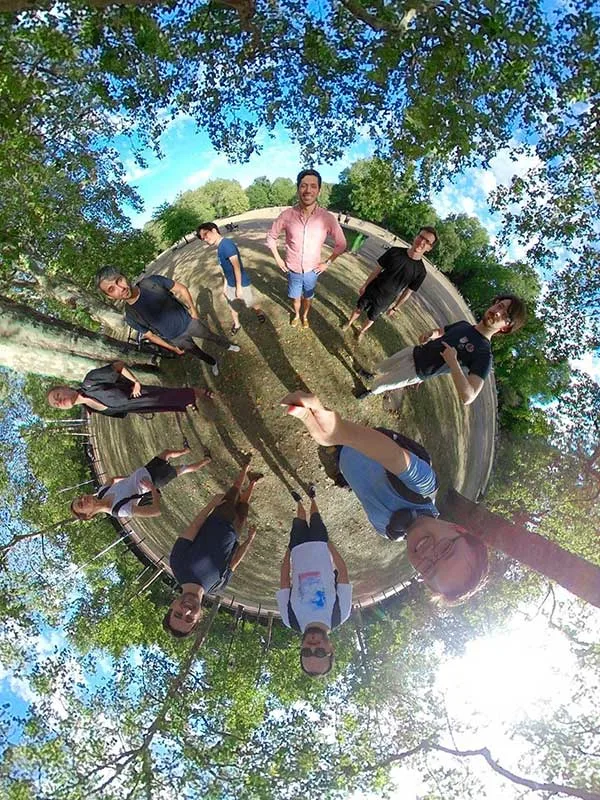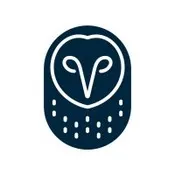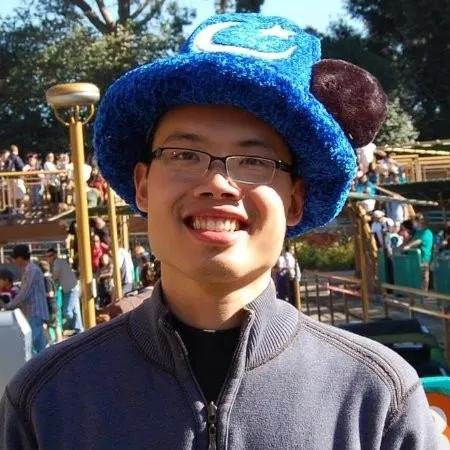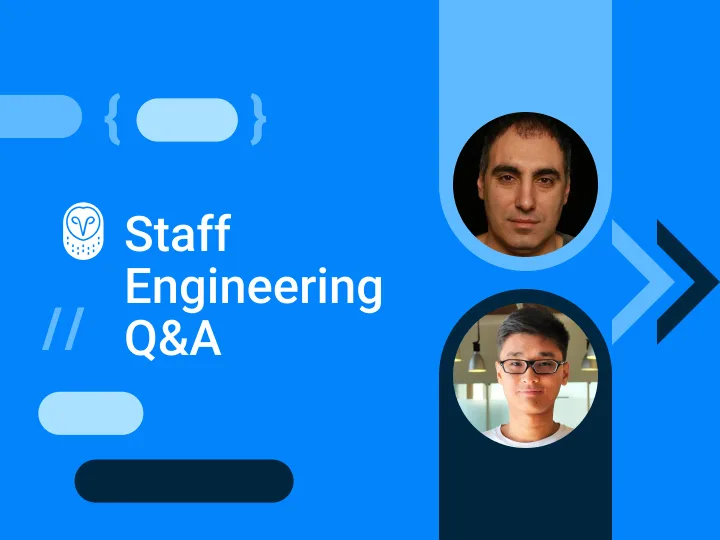Engineering At Samsara
Samsara Dev Spotlight: Michael Heasell and Seb Dijols
April 28, 2021

Samsara has seen significant growth in the US over the past six years. Valued at $5.4 billion last year, and with over 1,300 employees worldwide, plenty of people in San Francisco — and beyond — are already familiar with the name Samsara.
In 2019, we opened our U.K. office to lead our expansion into Europe, the Middle East, and Africa. With big plans ahead of us, we sat down with Software Engineers Michael Heasell and Seb Dijols to discuss what it’s like to build things here in London.
What does Samsara do here in EMEA?
“Essentially, we put lots of boxes into lots of vehicles that collect lots of data that we show to our customers”, summarises Michael. “We empower fleet managers and drivers to improve their efficiency, safety, and sustainability.”
“Exactly — Samsara is an IoT company”, explains Seb. “We produce a bunch of little devices that gather information that we ingest into our platform. Using this information, we empower managers of large fleets of trucks and vehicles to gather insights on what their drivers and assets are doing.”
Samsara already partners with some huge names here in Europe but there’s still so much room for growth. We’re active in the U.K., France, and Germany and we’ll be breaking into more countries this year. Our European offering is poised to make a huge impact on the transport and logistics industry, with our engineering team at the heart of the innovation.
How does the team deliver software?
The engineering team here in London has end-to-end responsibility for everything they build– including front-end, back-end, and mobile.
Michael explains more. “First, there’s initial roadmapping and planning. First off, the product team partners with customers to figure out what their problems and pain points are before working with design and engineering to come up with a proposal for a solution.”
“That all gets worked into a roadmap that flows down to us engineers, and the product team shares context around what the problem we are trying to solve is, why it is worth solving, and suggests some solutions. After that, it’s over to us as individuals.”
“We figure out the architecture, the deliverables, the timelines, execution and the rollout plan. When the plan is formed, we distribute it to other engineers to review and talk about, and we have an open discussion with peers. We never want a document to feel pinned down with no room for re-scoping — everything is open to changing needs. No plan is stapled down.”
“It’s a little different for me”, adds Seb. “I’ve mainly worked on a Europe-specific payroll product, where I’ve worked on four or five things that are all part of this larger project. I started off working as the sole engineer, but after a few months, another two engineers joined me as the product scaled. It’s been great — there’s a lot of code and document reviewing and lots of ad hoc meetings to get feedback from other engineers on the team that has been super useful.”
“We’re all still responsible for our deliverables, but given that it’s all interconnected, we all have to make sure that we build the product in unison, understand how to chunk it up, and know who can help where, if there are blockers.”
What did you do before Samsara?
Like most of the team, Michael has a pretty broad tech background. “I’ve been a professional developer since 2013 when I graduated from university in Computer Science. I’ve worked at a variety of mostly web-based startups. My first job was developing financial software with web front-ends, before moving to work at an early-stage startup in the fitness industry. I also worked a bit more in finance, and spent just over a year in a stock market research firm that specialised in algorithmic trading, before finally going to a startup that built time management software. So, I’ve seen quite a lot of stuff and different types of teams and companies.”
Seb also gained experience from working across a variety of industries. “I started off in a couple of banks, working in front office. I spent three or four years doing that. My last role in finance was sitting next to traders and quants, which was really fun, but I had an itch to dig deeper into tech. I started my own company with a friend from university, which was a real-time drawing social network that I worked on for a year and half. It was tough, but I really enjoyed it and learned a bunch of lessons.”
“After that, I joined another startup called Improbable. I wore a lot of hats there — first working on game engine libraries to make interacting with our platform easier, then as a technical account manager, basically debugging customer code, raising best practices and shipping updates. Next, I moved into our infrastructure team, working on distributed systems, before I created a data warehouse for the company. By the end, I was working on scaling the platform for a massive game launch. But after five years, I was ready for a change, and found Samsara.”
What technologies do you work with?
“Our connected devices, so the Vehicle Gateway (VG) and AI Dash Cams, run on a custom Linux build”, explains Seb. “On top of that, we have Go, and on the web side, we have React, TypeScript, GraphQL, and React Native for mobile.”
“The data is ingested from the devices into our own proprietary timeseries database which is built on top of AWS. That’s run by a separate ingestion team, and that whole flow is at the core of how we deal with IoT data. We interact with that service, and use other datastores, such as MySQL to put our own business logic on top.”
It’s worth noting that people coming into the team don’t need to be familiar with all the technologies we work with. Samsara has a language-agnostic approach to hiring with a real mix of knowledge in the team. Several of the team weren’t fluent in React Native or Go before they joined the team, but they are now.

Why do you enjoy working here?
“I really like the maturity of engineering processes here”, says Michael. “I’ve been in startups at early stages where it was a lot more like the Wild West. You show up, and the technologies and codebases are influenced very strongly by people’s personal styles, and every person on the team has a district style and you have to try and unify these things together and add engineering standards. But that doesn’t happen here”.
“Everyone in this engineering team is engaged and interested in the product and making things better. One thing I deeply appreciate here is that we’re all in it together — you can have an open and honest discussion about almost anything.”
“There’s no dogma. We have discussions based on merit, and everyone is interested in discovering the right thing and learning. That’s what I think I appreciate most about the team here — it’s such an open and inclusive environment that’s ideal to grow in.”
Seb agrees. “For me, a lot of things Michael mentions are enabled by the culture. Everyone is very approachable and friendly, so that really helps when you’re building a new feature that might impact other teams. In some companies, they might act really aggressively and push you away, whereas here, people are really nice — they’re happy to take the time and are very helpful. That transpires throughout the company, from the CEO down, into this nice can-do culture, and an intellectual interest in finding the right solution.”
“I also really like how the company has a good product-market fit”, continues Seb. “A lot of startups, especially if they don’t have a good fit, will change their engineering teams all the time. It’s very energy consuming as an engineer because you have to keep changing your focus. It’s kind of like going fishing — you’re trying to figure out in what direction you should be going in, which can be really annoying and demotivating. But here, we know what we’re building and have some traction, so we can really just execute well, and everything we build has a huge impact on the customer.”
“Trying to enable engineers to have a bigger impact; trying to figure out what they are passionate about, what they’re interested in expanding and what they’d like to improve on and trying to nurture that is the real way you’ll help engineers grow”, muses Michael. “Faisal (Director of Engineering in EMEA) is really good at that. He recognises what people are interested in and provides opportunities to expand on it.”
What’s next?
The Engineering team will be doubling in size over the next year so we’re keen to hear from developers who can build complex end-to-end systems.
As with most businesses, we’re all remote at the moment, but eventually we’ll be heading back into our central London office, a short walk north of Tower Bridge. There will be a mix of remote and in-office working, but both Michael and Seb are looking forward to getting back in at some point.
“Next to my desk, there’s a piano, a drumkit and a guitar for me to play around with”, says Michael. “We’re well looked after — there’s a catered buffet every lunchtime, and if people choose to work later from time to time, we’re given Deliveroo vouchers to get dinner. Also, there are great snacks!”.
“Yes, the snacks! Kinder Buenos, Babybels — whatever you want!”, laughs Seb. “Aside from all the perks though, it’ll be nice to have the energy of the office to draw on again. We’re a close knit team who enjoy working together.”
Samsara is hiring in London! Take a look at our live vacancies here, or reach out to Luke in our Talent Acquisition team with any questions.














